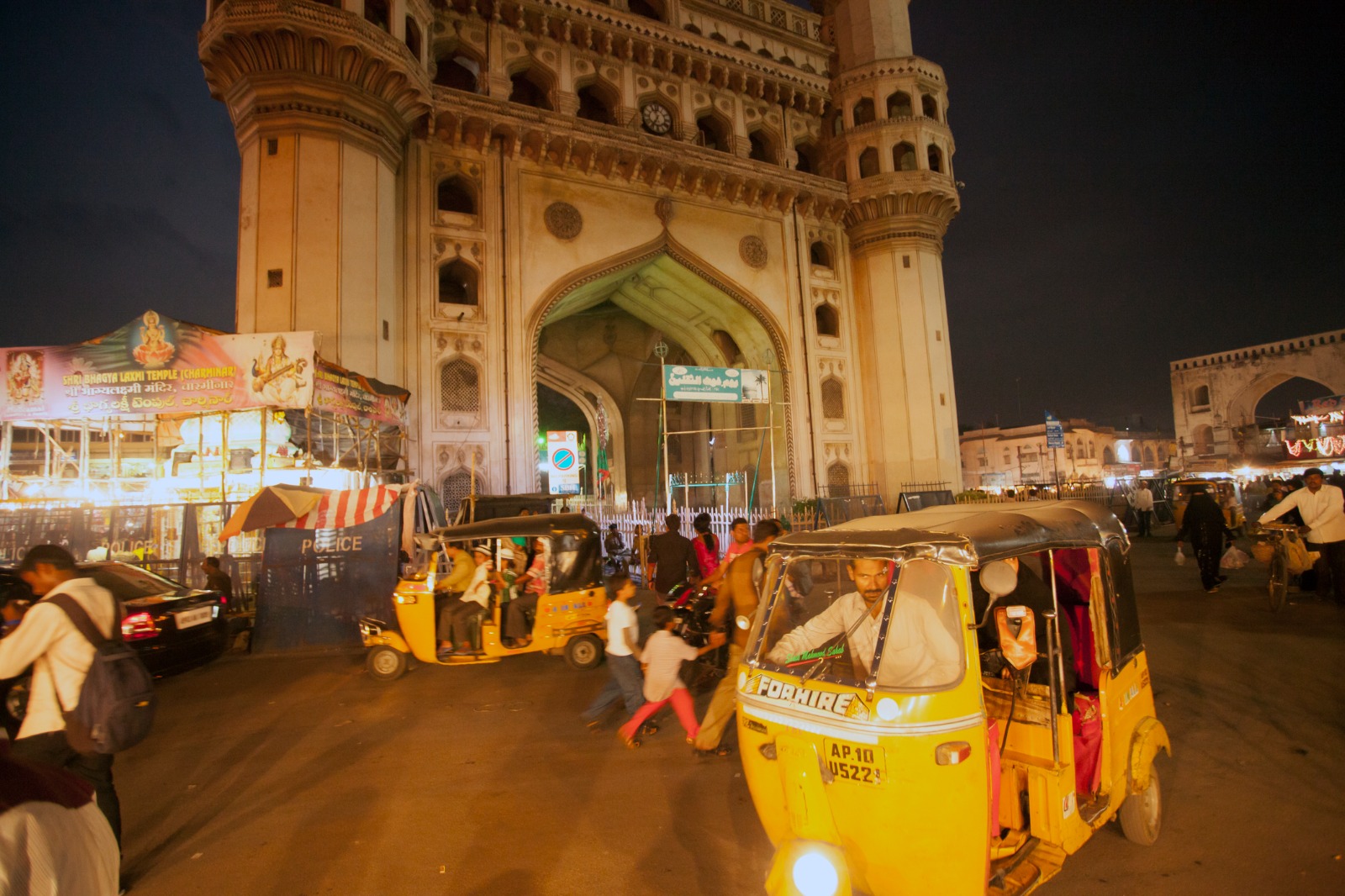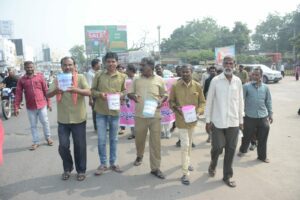The representatives of the auto drivers, who said Mahalakshmi scheme has completely toppled their income, want the government to constitute a welfare board, among other demands.

Telangana Chief Minister A Revanth Reddy on Tuesday, 23 December, announced a thorough plan to support gig workers, including autorickshaw drivers, cab drivers, and food delivery agents.
He said the government would offer a ₹5-lakh accidental insurance cover and ensure a ₹10-lakh health cover for the gig workers as part of the “Rajiv Arogyasri” scheme.
Reddy was speaking at a meeting with representatives of gig and platform workers in Hyderabad.
While most gig workers and their representatives welcomed the decision, autorickshaw drivers and those representing them claimed the insurance scheme had always been there for them.
They are also miffed with the Mahalakshmi scheme, which ensures free bus travel for women, saying it has impacted their incomes.
“It is not an additional benefit to us,” Vemula Maraiah, president of the Telangana Automotors Drivers Trade Union — affiliated with the Bharatiya Rashtra Trade Union (BRTU) — told South First.
The BRTU itself is affiliated with the BRS, the party that ruled Telangana since the state’s creation in 2014.
The party was dethroned a little more than a month ago, in the 30 November Assembly elections, which the Congress won, paving the way for A Revanth Reddy to become the chief minister.
The BRTU has now called for a “Maha Dharna” on Sunday, 7 January, at Indira Park to protest against the Mahalakshmi scheme — one of the poll promises of the Congress, which it implemented within days of coming to power in the state in December — and also to register their demands.
Around 1,000 auto drivers are expected to join the protest at the Dharna Chowk — an area that has witnessed several protests and strikes against the government.
South First earlier reported that auto drivers — who were already hit by aggregator apps like Uber, Ola, and Rapido — were miffed at Telangana’s free-bus-ride Mahalakshmi scheme for women, launched on 9 December, 2023.
They said their customer base — especially working women — had shrunk as the women were now preferring free bus rides over auto services.
Several auto stands in Hyderabad now appear emptier than usual, especially on busy working days.
Ajay Babu of the Left-aligned Centre of Trade Unions (CITU) claimed the income of auto drivers had gone down by 70-80 percent since the Mahalakshmi scheme was flagged off.
“If an auto driver earned around ₹1,000 per day earlier, they are now making ₹200-300,” Babu claimed while speaking to South First.

In a symbolic protest, auto drivers in Karimnagar district protested by resorting to begging ‘bikshatana’ on 3 January. (Supplied)
The union representatives said the auto drivers saw the app-based services such as Ola, Uber, and Rapido, as a tactic to divert customers. “But due to Mahalakshmi, the women have altogether stopped using autos,” said Babu.
After the implementation of the zero-ticket scheme, the Telangana State Road Transport Corporation (TSRTC) stated that the occupancy rate of buses had gone up from 69 percent (till 23 November) to 88 percent.
A TSRTC official told South First earlier that the occupancy had hit 100-110 percent on several routes.
“Earlier, the ratio used to be approximately 70 percent men and 30 women. Now, it has reversed, with 70 percent women and 30 percent men,” the official said.
The auto drivers and their representatives said that the hit was more dire in rural areas.
“In rural areas, autos were the main source of transport from one village to another or mandal bus stops. But now, women are travelling only by bus even if they have to wait for some time,” V Kiran of the Indian Federation of Trade Unions (IFTU) told South First.
“In cities, women who would prefer autos are now preferring to walk for short distances,” he added.
B Venkatesham, the convenor of the All India Trade Union Congress (AITUC)-led auto union, acknowledged that the Mahalakshmi scheme was helping crores of people.
“We have nothing against the scheme. All we are demanding is: Show us the way out. The government is saying it will take care of us as well, but how?” he asked while speaking to South First.
The newly-elected Congress government, in its manifesto, promised ₹12,000 per annum to auto drivers.
As much as the auto drivers want the government to release the funds immediately, they believe it would be insufficient to meet their needs.
“How will that be enough? It breaks down to ₹30 per day. For someone once earning ₹1,000-1,500 per day, how will ₹30 be enough? Auto drivers survive on daily earnings. Instead, the government should pay us a monthly allowance of ₹15,000,” Venkatesham said.
The auto drivers are also seeking the constitution of a Welfare Board for social security for them as well as their families.
“It would ensure education for our children, monthly pension for auto drivers above a certain age, and also provide several other assistance to us,” said Venkatesham.
The hike in the fares of autos has been a long-pending demand. The auto drivers have been putting up over the years since the prices of fuel have significantly increased.
Prakash Manne, an auto driver from Manjeera Circle in Hafeezpet, told South First earlier, “During YS Rajasekhara Reddy’s tenure in the united Andhra Pradesh, the meter rate was ₹11-20 with the diesel rate around ₹35-40 per litre. Now, the diesel rate is ₹98, and the rate per km offered online is the same. In addition, we also need to pay platform fees to these online apps, as we have no option left since many customers are booking online.”
The auto drivers have said they also have to pay around ₹11-13 per km to the aggregator apps such as Ola, Uber, and Rapido, which charge a commission of 10-20 percent on each trip.
Another significant demand the auto drivers’ union leaders have put forward was the execution of a single-permit policy — a promise made by Congress leader Rahul Gandhi during his interaction with auto drivers, gig workers, and sanitary workers on 28 November, two days before the Telangana Assembly elections.
“The single-permit system was stopped in 2002, due to which auto drivers were compelled to pay double the amount as the permits were being sold in the black market. In the GHMC limits, it costs ₹5.5 lakh to buy autos. However, if the government clears the single-permit policy, the price would fall to half the current cost,” Maraiah of the BRTU said.

May 03, 2024

May 03, 2024

May 03, 2024

May 03, 2024

May 02, 2024

May 02, 2024